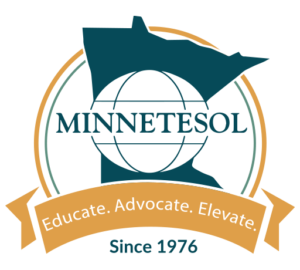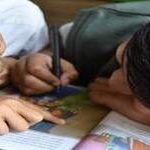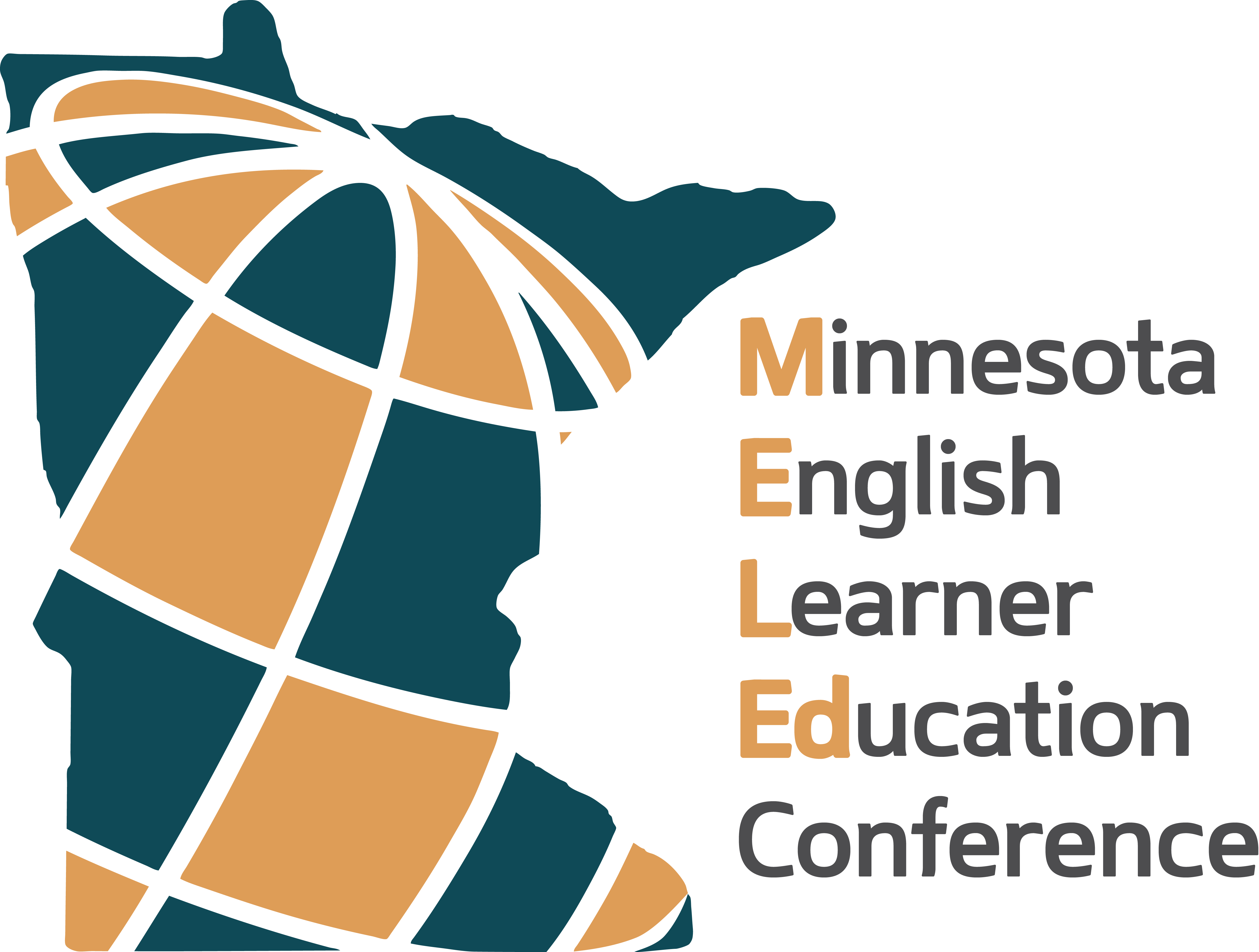Miranda Schornack, Michelle Benegas, & Amy O. Stolpestad
This article examines an assignment common in ESL methods courses—the English learner case study (or learner profile)—for dispositional development and explores how teacher educators can be more explicit and thorough in cultivating educator dispositions for working with English Learners.
Key words: Teacher education, English learner case study, dispositions
Introduction
The struggle to gain footing on the notion that “every student is my student”—that all teacher candidates1 perceive learning about working with English learners (ELs) as central to their work as teachers—is ongoing. The need for such work is critical as the current U.S. sociopolitical context is fraught with examples of problematic dispositions toward immigrant and language minoritized communities. In this article, we will share what we have learned from our collective 30 years of experience across five institutions of higher education (IHEs) working to foster the dispositions needed to work effectively and respectfully with ELs and advocate for further work in this area.
We analyze the presence of dispositions in the EL case study assignment, what we term one of the “high impact practices” (HIPs) in our English as a Second Language (ESL) methods courses for elementary and secondary teacher candidates. While dispositional work was often inherent of HIPs like the case study assignment, it was not given the full attention we believe dispositions deserve. To illustrate this, we use a local dispositions framework (MnEDS™ Research Group, 2017-2018) to examine the ways in which the case study assignment provides opportunities to develop dispositions. We selected the MnEDS™ framework because of our familiarity with it as a local resource, its powerful three-pronged conceptual foundation, and its unique rubric structure (these are articulated in the section below). We then call for IHEs to be more explicit and thorough in the cultivation of candidate dispositions for working with ELs. It is important to note that we have used the EL case study assignment in methods courses for teacher candidates pursuing language-centered credentials (e.g., ESL, world language) and those pursuing non-language centered licenses (e.g., math, elementary). We believe the ideas we present have implications for all types of credentialing programs.
Dispositions
Dispositions is one of the three major constructs in educator development (Bransford et al., 2005). Unlike the two other constructs, knowledge and skills, respectively, dispositions “has failed to garner the same type of gravitas in the field” (Hill-Jackson & Lewis, 2010, p. 61). In this landscape, IHEs have come to define dispositions locally (Damon, 2007; Rose, 2013).
The MnEDS™ Framework
One such example is the University of Minnesota-Twin Cities which, through the work of a research group comprised of doctoral students, clinical and instructional staff and faculty, and educational researchers, created the Minnesota Educator Dispositions System™ (MnEDS™). The MnEDS™ Research Group (2017-2018, p. 1) defined dispositions as:
The commitments you make as a classroom teacher are evident in the pedagogical choices you make, the curriculum you write, your interactions with students, teachers, colleagues, families, and community members, and in the ways you carry yourself as an educator. We call these dispositions for teaching.
Conceptual underpinnings
The three conceptual underpinnings of MnEDS™ are 1) dispositions are formative, and they can be coached and cultivated; 2) knowledge of a person’s dispositions is distributed across contexts and people, therefore dispositions development can only be done in dialogue with others; and 3) dispositions must be equity-oriented (MnEDS™ Research Group, 2017-2018).
Dispositional strands
From that conceptual framework, MnEDS™ identified eight disposition strands: assets, role of self, collaboration and communication, critical care, intentional professional choices, navigation: flexibility and adaptability, imagination and innovation, and advocacy (see Figure 1: MnEDS 8 Dispositional Strands, MnEDS™ Research Group, 2017-2018).
Rubric structure
The MnEDS™ framework offers a rubric structure that is unique in two key ways. First, the rubrics are descriptive. Unlike numeric or progressive rubrics, the MnEDS™ rubrics—see Figure 2 below—name four different ways of expressing dispositions that are a part of an individual’s ongoing dispositions development.

In other words, the MnEDS™ framework expects a person to flow across the four descriptive categories across time and space, as the teaching and learning context shifts.
Second, the three descriptive columns on the right side of the vertical bold line represent three distinct ways of developing dispositions. Awareness signals the knowledge-base a person has regarding a particular disposition strand. Commitment reflects a person’s belief in the value of that disposition strand for teaching and learning. Enactment is when a person engages in a practice or behavior that takes up the disposition in a clear way. The MnEDS™ framework proposes that all three ways of developing dispositions are important and intertwined with one another, rather than developed linearly or in a defined progression.
High impact practices
In this paper we introduce HIPs to refer to course elements (e.g., activities, assignments) that resulted in palpable differences (Kubanyiova, 2019) in teacher candidates. HIPs are the activities and assignments that candidates reported as being particularly impactful and that we instructors observed as moments that shifted candidates’ perspectives. It is important to highlight that HIPs are less about candidates’ demonstration of technical skill or knowledge of content or theories of child/human development and more about candidates’ enactment of dispositions for working with language minoritized students. In other words, HIPs shift the focus from “What do I need to do to teach ELs effectively?” to “How do I need to be to teach ELs ethically?” One such HIP is the EL case study assignment.
Examining the EL case study assignment
We chose this particular HIP for analysis for two reasons. First, in our experiences as methods course instructors, the case study most robustly attends to candidate dispositions. Second, we have found that the case study is a common assignment across IHEs preparing candidates to work with language minoritized students, families, and communities.
The case study assignment requires candidates to work closely with one EL for an extended period of time. Theoretically, the close and meaningful interactions between a candidate and EL can foster not only the development of knowledge and skills but also dispositions. The following assignment analysis illustrates what we have learned about the opportunity to focus on candidate dispositions in the EL case study assignment. We provide contextual details intentionally to either illuminate our analysis and/or provide key clarifying information that would be useful to fellow instructors of ESL methods courses.
Where are dispositions in the EL case study assignment?
In our analysis, we examine five common components of the case study assignment: acknowledging funds of knowledge, reflecting on shifts in perspective, building relationships, analyzing instruction, and recognizing the teaching and learning context. For each of the five components, we illustrate where and how MnEDS™ dispositions were addressed. When appropriate, we offer a loving critique of the current version of the MnEDS™ framework. Our goal in providing critique is to demonstrate the need for teacher educators to be critical consumers of resources and stimulate dialogue and ongoing research, implementation, and development of frameworks that cultivate educator dispositions for working with language minoritized students. Following the analysis, we discuss how we could improve our focus on candidate dispositions by being more explicit and thorough about the dispositional aspects of teaching in our assignments. It is worth noting that each author taught the EL case study assignment in a different context. The specific assignment descriptions varied, the licensure area of the teacher candidates were different, and whether candidates had a clinical placement was different. Therefore, we discuss how dispositions were typically part of case study assignments, not highlighting any particular assignment description.
Acknowledging funds of knowledge
One component of a case study assignment is for candidates to learn more about the funds of knowledge (Moll et al., 1992) of ELs, their families, and communities. This aligns with MnEDS™ Strand 1: Assets and MnEDS™ Strand 3: Collaboration and Communication. Candidates were expected to have one-on-one interactions with their focal student and sometimes conduct an interview. Although one-on-one interactions are normal aspects of pre-service teacher work in clinical placements, an interview with one student—particularly a student who is a member of a social group that has been historically marginalized in the education system—is not. Therefore, the act of conducting an interview with a language-minoritized student may actually serve to further “other” them from the perspective of the pre-service teacher (Gitlin et al., 2003). It is also clear that the case study falls short in addressing engagement with families and collaboration with colleagues, which is integral to Strand 3. Common explanations for this are the limited time that candidates are in a clinical placement as well as their positionality as pre-service teachers. Further, where the candidate will fall on the developmental rubrics depends, in part, on whether the candidate is reporting on internal shifts in their perspective or demonstrating those shifts in new praxis. For instance, the second indicator in the awareness column for Strand 1 is “Desires to learn about students’ backgrounds and communities.” Candidates who write about their desire to learn about students’ backgrounds, without actually demonstrating how they’ve taken up their desire with real students, would be situated there. Alternatively, candidates could be situated in the enactment column if they “[use] critical inquiries about culture to build relationships and inform teaching and learning,” the third indicator there. The question for teacher educators becomes how candidates can demonstrate their dispositions, particularly when teacher educators have not directly observed what candidates report in written assignments. One challenge to using MnEDS™ is that the indicators in each column are not always aligned to the indicators in the same position in other columns. For example, MnEDS™ Strand 5: Intentional Professional Choices contains four indicators in the critical incidents and enactment columns but only three indicators in the awareness and commitment columns. Positioning the same number of indicators, in the same order in each column, could facilitate the use of the MnEDS™ descriptive rubrics.
Reflecting on new learning
Another common aspect of the case study assignment is for candidates to reflect on new learning or shifts in perspective that occurred while working closely with one EL. The new learning has often been related to perspectives on multilingualism, how mainstream teachers can responsibly work with ELs, newly developed empathy for learning a second language, and/or how prior opinions or biases have been challenged. This aspect of the case study aligns with MnEDS™ Strand 2: Role of Self. The first indicator across each of the four columns in the descriptive rubric is centered on personal biases. As an example, the language in the commitment column is “Critically reflects on the ways in which their personal biases, characteristics, and identities impact teaching and learning.” A key consideration when using MnEDS™ rubrics in the development of teacher candidates for working with language minoritized students, families, and communities is that the language of the rubrics might be too general to point to specific biases regarding language. Language biases can be challenging for candidates who are monolingual in a society driven by monolingual, English-only stances (de Jong & Gao, 2019), monoglossic language ideologies (Flores & Rosa, 2015), and English imperialism (Motha, 2014).
Building relationships
In the case study, candidates are expected to build a meaningful relationship with an EL and this nods to MnEDS™ Strand 4: Critical Care. While such a relationship may have developed during the candidate’s clinical placement, it was not an explicit feature of the case study assignment, nor was it assessed. A number of students reported that they had a heightened understanding of their focal student’s lived experiences, as well as increased empathy for challenges that they faced. However, this outcome was not consistent across candidates and, similar to Strand 3: Collaboration and Communication, there was no carry through to application. Using the language of the rubric, candidates did not “build students’ self-efficacy and achievement.” Strand 4 requires that the candidates position themselves as a source of support, working in solidarity with their students and this was not directly attended to or assessed in the case study assignment. One barrier to building a meaningful relationship with a focal learner is the limited time they spent with them. However, given the newly developed MnEDS™ framework, the assignment could be redesigned to better reflect a stance of critical care in working with ELs.
Analyzing instruction
MnEDS™ Strand 5: Intentional Professional Choices asks the teacher candidate to participate in “ongoing professional learning and decision making that is ethical, based on multiple forms of evidence and feedback, and extends opportunities for professional growth and leadership” (MnEDS™ Research Group, 2017-2018). One goal of the case study is for candidates to observe instructional choices teachers made in order to attend to the teaching and learning needs of the focus student. The case study allowed for a rare but important look at how professional choices impacted a student’s development. However, the case study assignment was limited in that the candidate was not the one making the instructional pivot in order to respond to the student, but rather watching as another teacher did or did not do so. Viewed through the lens of Strand 5, the case study provided an opportunity to evaluate other teachers’ practices rather than their own, so there are several dispositional qualities laid out in the rubric that are entirely missed in the assignment. Further complicating this is the fact that some of the ways in which candidates demonstrate their strengths in Strand 5 are difficult to capture in a university-based course assignment, such as engagement in teacher leadership activities.
Recognizing the teaching and learning context
MnEDS™ Strand 6: Flexibility and Adaptability includes a candidate’s ability to understand the learning context and make changes as necessary in order to best meet the needs of students and their families. Under the commitment column of the rubric, the case study clearly provides candidates with an opportunity to “passively learn from students, colleagues, and like-minded people in communities as a means of finding a navigational compass,” but the assignment does not allow for the demonstration of enactment of this disposition because the candidate remains passive for the better part of the experience. True enactment would require instructional autonomy on the part of the candidate, which is constrained by the time limitations in the clinical placement context. For example, some candidates were able to complete the case study while student teaching, allowing for opportunities to work one-on-one with instructional materials, while others completed the assignment in schools where they were observers only. These systemic conditions influenced the degree to which the case study had the potential to address many of the criteria laid out in Strand 6.
Where do we go from here?
While some areas for improvement of the MnEDS™ framework were suggested (e.g., consistent indicator language across descriptive rubric categories), it is evident that there is a critical need for such a tool if we seek to foster dispositional development in educators toward equitably serving ELs. Perhaps the most significant finding in this analysis is that a capstone assignment, such as the EL case study that is common across teacher education programs, lacked explicit attention to, application of, and assessment of dispositional development. Relying on student epiphany falls short in intentionality and assurance that needed dispositions are attended to. Further, our analysis revealed that even a capstone project like the case study assignment can be completed “fully” and still be largely theoretical—not bridging to a candidate’s praxis or enactment of dispositions. Using a framework such as MnEDS™ can bolster assignments in teacher education so that dispositions are addressed and assessed in intentional, applicable, and assessable ways.
Our analysis of a single HIP illuminated the ways in which we, as teacher educators, partially addressed equity-oriented dispositions. Excluding dispositions, or failing to attend to them in sufficient detail, is like removing one leg from a three-legged stool. Without dispositions for working with ELs, teacher knowledge about them and skills to serve them are incomplete. Moving forward, we are committed to being more explicit and thorough about the dispositional expectations of coursework. Ongoing and rigorous examination of our practices will allow the field of teacher education to evolve toward a more robust understanding of how we can cultivate and assess dispositions in teacher candidates. Analyses such as this one can lead us to such a place.
Notes
- We use the term “candidates” and phrase “teacher candidates” interchangeably to refer to individuals pursuing a teaching credential or licensure.
References
Bransford, J., Darling-Hammond, L., & LePage, P. (2005). Introduction. In L. Darling-Hammond, & J. Bransford (Eds.), Preparing teachers for a changing world: What teachers should learn and be able to do, (pp. 1-39). Jossey-Bass.
Damon, W. (2007). Dispositions and teacher assessment: The need for a more rigorous definition. Journal of Teacher Education, 58(5), 365-369. https://doi.org/10.1177/0022487107308732
de Jong, E., & Gao, J. (2019). Taking a multilingual stance: A continuum of practices. MinneTESOL Journal, 35(1). http://minnetesoljournal.org/current-issue/mtj-2019-1/taking-a-multilingual-stance-a-continuum-of-practices/
Flores, N., & Rosa, J. (2015). Undoing appropriateness: Raciolinguistic ideologies and language diversity in education. Harvard Educational Review, 85(2), 149-171. https://doi.org/10.17763/0017-8055.85.2.149
Gitlin, A., Buendía, E., Crosland, K., & Doumbia, F. (2003). The production of margin and center: Welcoming-unwelcoming of immigrant students. American Educational Research Journal, 40(1), 91-122. https://doi.org/10.3102/00028312040001091
Hill-Jackson, V., & Lewis, C. W. (2010). Dispositions matter: Advancing habits of the mind for social justice. In V. Hill-Jackson, & C. W. Lewis (Eds.), Transforming teacher education: What went wrong with teacher training, and how we can fix it (pp. 61-92). Stylus Publishing, Inc.
Kubanyiova, M. (2019, May). The promise of “disturbing encounter” as meaningful language teacher education. Keynote address presented at the 11th International Language Teacher Education Conference. Minneapolis, MN.
MnEDS™ Research Group. (2017-2018). Minnesota educator dispositions systems (MnEDS™): A framework for equity-oriented teaching. Accessed 15 May 2020 at https://sites.google.com/a/umn.edu/umn-dispositions-assessment-framework/home
Moll, L., Amanti, C., Neff, D., Gonzalez, N. (1992). Funds of knowledge for teaching: Using a qualitative approach to connect homes and classrooms. Theory into Practice, 31(2), 132–141. https://doi.org/10.1080/00405849209543534
Motha, S. (2014). Race, empire, and English language teaching. Teachers College Press.
Rose, S. (2013). How do teacher preparation programs promote desired dispositions in candidates? SAGE Open, 3(1), 1-8. http://doi.org/10.1177/2158244013480150











